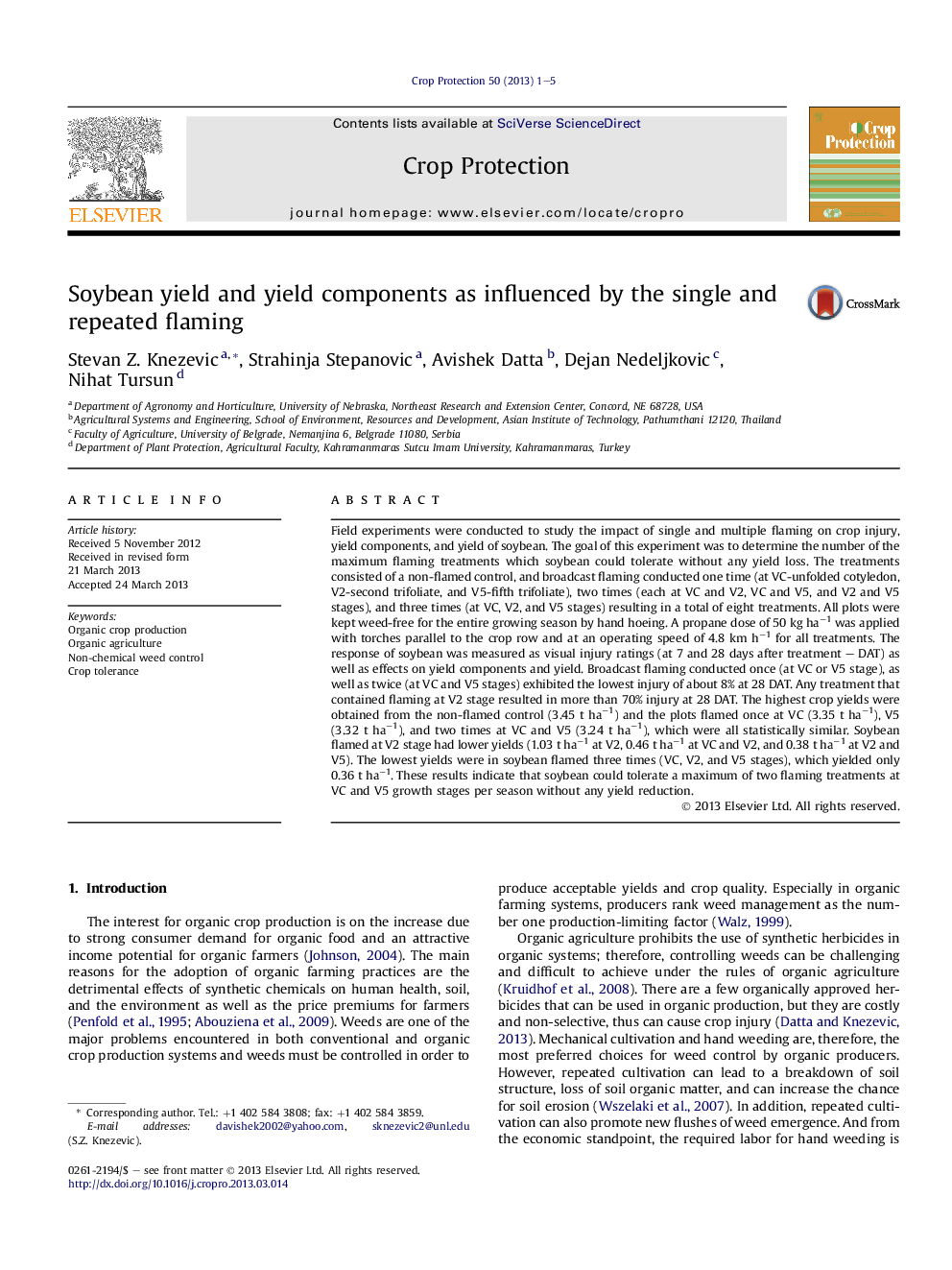| کد مقاله | کد نشریه | سال انتشار | مقاله انگلیسی | نسخه تمام متن |
|---|---|---|---|---|
| 4505971 | 1624337 | 2013 | 5 صفحه PDF | دانلود رایگان |

• Soybean (SB) tolerance to single and multiple flaming was evaluated.
• SB response varied with growth stage of flaming and number of flaming treatments.
• V2 SB stage was the least tolerant to flaming; VC and V5 stages were the most tolerant.
• SB could tolerate a maximum of two flaming treatments (VC and V5 stages) per season.
Field experiments were conducted to study the impact of single and multiple flaming on crop injury, yield components, and yield of soybean. The goal of this experiment was to determine the number of the maximum flaming treatments which soybean could tolerate without any yield loss. The treatments consisted of a non-flamed control, and broadcast flaming conducted one time (at VC-unfolded cotyledon, V2-second trifoliate, and V5-fifth trifoliate), two times (each at VC and V2, VC and V5, and V2 and V5 stages), and three times (at VC, V2, and V5 stages) resulting in a total of eight treatments. All plots were kept weed-free for the entire growing season by hand hoeing. A propane dose of 50 kg ha−1 was applied with torches parallel to the crop row and at an operating speed of 4.8 km h−1 for all treatments. The response of soybean was measured as visual injury ratings (at 7 and 28 days after treatment – DAT) as well as effects on yield components and yield. Broadcast flaming conducted once (at VC or V5 stage), as well as twice (at VC and V5 stages) exhibited the lowest injury of about 8% at 28 DAT. Any treatment that contained flaming at V2 stage resulted in more than 70% injury at 28 DAT. The highest crop yields were obtained from the non-flamed control (3.45 t ha−1) and the plots flamed once at VC (3.35 t ha−1), V5 (3.32 t ha−1), and two times at VC and V5 (3.24 t ha−1), which were all statistically similar. Soybean flamed at V2 stage had lower yields (1.03 t ha−1 at V2, 0.46 t ha−1 at VC and V2, and 0.38 t ha−1 at V2 and V5). The lowest yields were in soybean flamed three times (VC, V2, and V5 stages), which yielded only 0.36 t ha−1. These results indicate that soybean could tolerate a maximum of two flaming treatments at VC and V5 growth stages per season without any yield reduction.
Journal: Crop Protection - Volume 50, August 2013, Pages 1–5